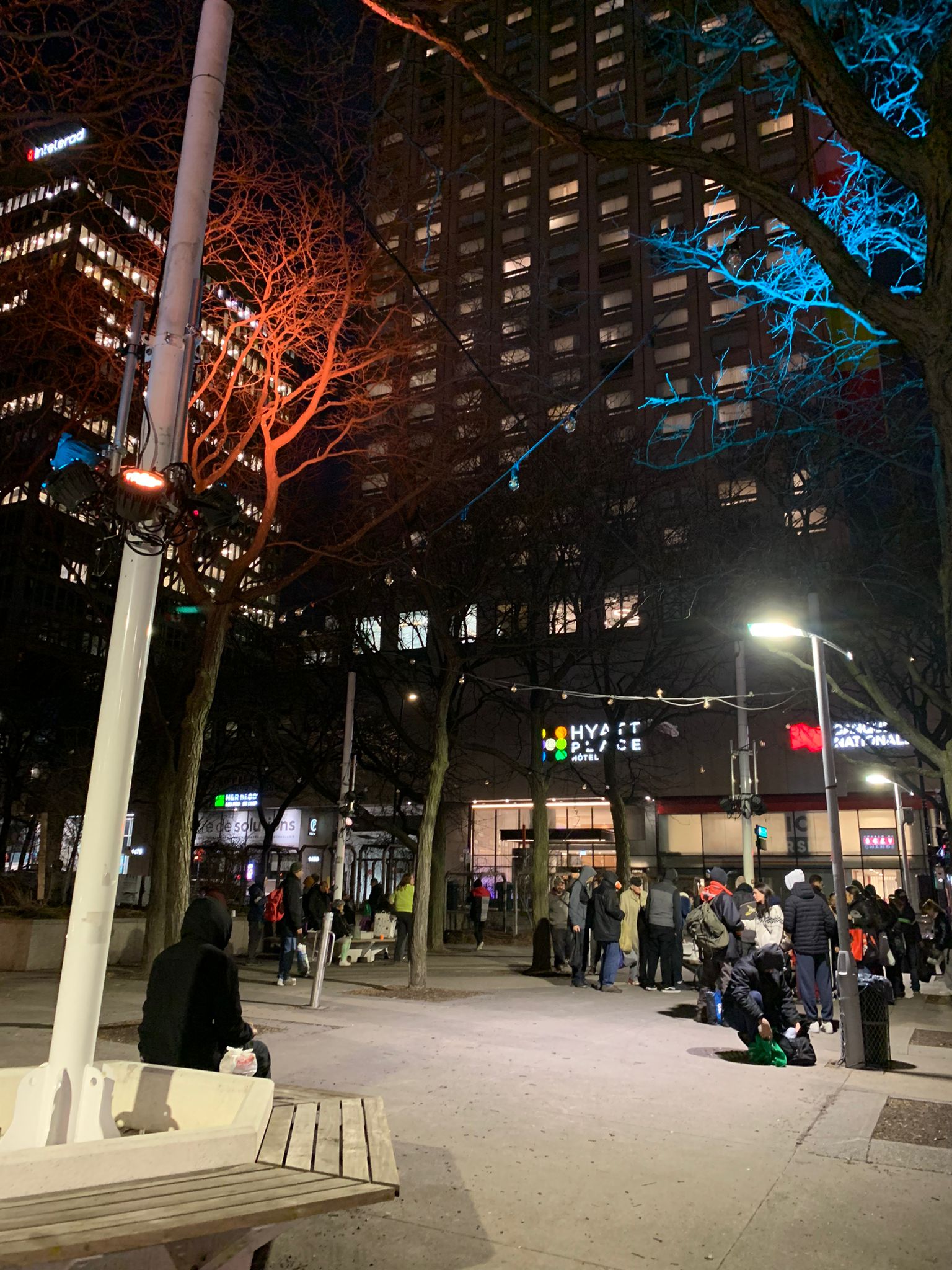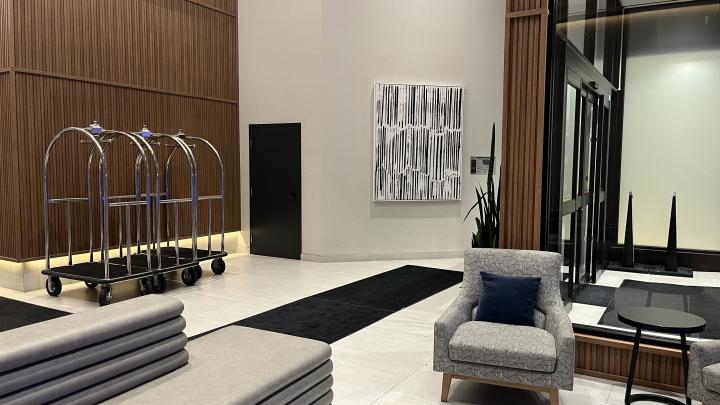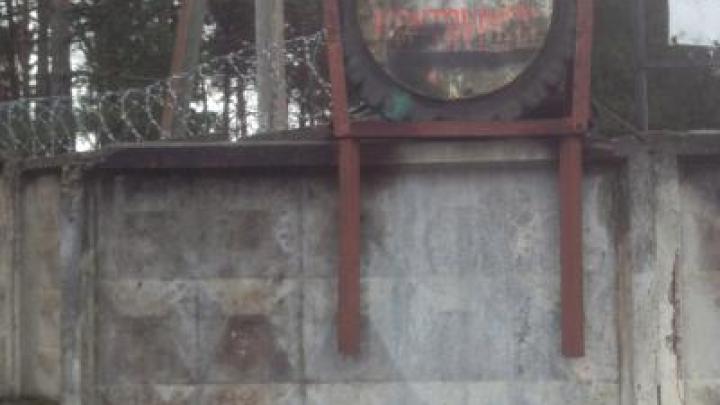Hospitality Gone Wrong: 2 - Outside of Place Dupuis
Posted
Time to read
Guest post by Karine Côté-Boucher, Meritxell Abellan Almenara, and Maxine Both. Karine Côté-Boucher is an Associate Professor at the School of Criminology at the University of Montreal. Her research focuses on border control and technology, immigration and security practices, and the politics of care. Her most recent book Border Frictions: Gender, Generation and Technology on the Frontline is published by Routledge. Meritxell Abellan Almenara is a PhD candidate in criminology at the University of Montreal. Her thesis project focuses on the ways criminal inadmissibility has transformed the perceptions and practices of judicial actors during the sentencing stage. Maxine Both is a Ph.D. Researcher in the Department of Political and Social Sciences at the European University Institute (EUI) in Florence, Italy. Her research explores the role of civil society organizations and activists in supporting migrants held in immigration detention in Canada and Italy.
This is part one of a two-part mini series entitled "Hospitality Gone Wrong". You can read part one here.
Part one of this post described how Place Dupuis, a downtown Montréal hotel turned into a temporary shelter for asylum-seekers, was organized to ensure the socio-spatial segregation of asylum-seekers from the rest of the hotel’s guests. In understanding the border as a site that excludes as it includes, Part two follows asylum seekers once they exit Place Dupuis. The socio-spatial segregation they experienced in the hotel threatens to follow them just outside of its doors – translating into precarious housing, mental health issues, or substance abuse.
Inclusion into Precarity
Place Dupuis rises above a square called Émilie-Gamelin, on the eastern side of Montreal’s Quartier des Spectacles. Ever since 1841, when the first hospice opened onsite, the square has served as a gathering place for the city’s unhoused population. Nowadays, organizations such as Spectre de rue and GRIP regularly offer substance verification services on the square premises. Several times each week, makeshift stalls run by community organizations distribute hot meals for free directly in front of the hotel The number of vulnerable people living in or around the area has sharply increased during the past few years, particularly since the Covid-19 pandemic, when the Place Dupuis hotel also served as a homeless shelter. Today, drug consumption and abuse, homelessness and mental health issues abound in the area.
Émilie-Gamelin square represents a space where Montreal (and Quebec) offloads its surplus population– the unwanted, those with nowhere else to go – with asylum-seekers representing the newest addition to the mix. The Resettlement Assistance Program’s (RAP) provisions on the maximum length and conditions of asylum seekers’ hotel stays are far from clear, and precarious migration status has started rhyming with precarious housing. In many cases leaving the hotel once they receive social assistance but before they receive their actual working permit, the basic monthly income support for asylum seekers is often insufficient to afford stable housing in an increasingly competitive rental market. As emergency shelters fill up, asylum seekers risk living on the streets just outside the hotel. Bringing asylum seekers to this particular section of downtown Montreal, with its long history of assistance to the unhoused and the marginalized, sends a strong message of inclusionary exclusion: because of their spatial location, asylum-seekers become part of the city’s undesirables, joining other groups vulnerable to homelessness such as Indigenous people, individuals with drug dependencies and persons with mental health issues.
Canada approaches the growing numbers of asylum seekers with a ‘crisis’ mentality, where temporary solutions replace long-term acknowledgement of the reality of forced migration. The federal system shifts responsibility to different levels of government and prioritizes those who have obtained refugee status. However, this is problematic forasylum claimants who spend on average 24 months waiting for their case to be heard by the Immigration and Refugee Board. Such long waiting times only exacerbate precariousness and create more gaps in access to affordable housing. Nevertheless, the federal government is determined to grant funding to housing programs for migrants, but only on an interim basis. It also continues to lack a centralized system to support asylum seekers at the national level. Montreal authorities did the same: instead of setting up new, permanent mechanisms to address the needs of asylum seekers, they implicitly relied on the temporary transfer of responsibilities to community actors already operating in and around the square. And, while the city’s mayor acknowledges that the challenges faced by asylum seekers are “very different from the homeless or people seeking mental health or drug use [...] in that area", the actions of the local authorities tell a different story.

As public authorities retreated inside the hotel, already overburdened NGOs and community-based organizations operating just outside were expected to find the resources and expertise to cater to the intersecting needs of asylum-seekers. Yet they were extremely ill-equipped and barely trained to do so: in addition to the regular layers of precarity - housing instability, poverty, mental health issues, etc.- asylum-seekers face a whole new set of challenges - cultural differences, language barriers, displacement trauma – that set them apart from the regular clientele of those organizations. As layers of precarity combine into complex – and even more challenging – cases for intervention, existing supports become strained in their capacity to properly address basic needs.
The longer that asylum seekers spend in the hotel’s surrounding space without appropriate supports, the higher the risk that existing levels of precarity are exacerbated. Place Dupuis is an area heavily policed in the city of Montreal. Staying in the area might increase the likelihood of being subjected to document checks and other police controls, particularly for asylum-seekers who belong to a visible minority. In the end, including asylum-seekers in the square becomes another mechanism for the socio-spatial control of these individuals, reinforcing popular – but false – associations of immigration and criminality.
Conclusion
We need to pay closer attention to surrounding spatial and social environments of refugee reception in generating new forms of inclusionary exclusion. The observations made here are specific to Place Dupuis hotel, which sits at the particular intersection of migration, wealth, and poverty. Whether they apply to other hotels is more difficult to say, for each hotel might reflect differences in inclusionary exclusion, depending on the particular mix of dynamics within the surrounding society. What we do know, however, is that Place Dupuis is not the only hotel being used for the temporary accommodation of asylum seekers in Canada and that long-term accommodation solutions have yet to be found. In Niagara Falls, Ontario, between February 2023 and February 2024, 5000 asylum seekers were housed in hotels. Yet in March 2024, at the start of the tourist season, they were asked to leave the 4-star hotel premises to make way for more privileged guests, with some reallocated to a 2-star hotel two blocks away. Be it in Place Dupuis or in Niagara Falls, the inherent temporality of hotel accommodations means that the risk of becoming unhoused is never too far.
Refugee claimants are already overrepresented among the emergency shelter population, and numbers will only increase further unless authorities start planning for durable solutions. Taking an intersectional approach to housing for asylum seekers by improving access to subsidized housing, increasing social assistance programs to facilitate transitional housing affordability, expanding the eligibility criteria for housing resources, guaranteeing access to social and health benefits, or investing in longer-term accompaniment support systems for those navigating the asylum process could all provide more forward-thinking alternatives.
Behind the walls of all temporary accommodation spaces is the idea that humanitarian crises can be met with improvised and short-lived measures, under the assumption that the problem at some point will simply disappear. Yet in doing so, we risk losing sight of the permanence and normality of migration as a phenomenon. Hotels are inherently spaces of constant movement. People come and go, usually only staying a few days. Crises are also temporary, lasting only a few years or months at a time. But the mobility of humans in search of asylum is not going to end anytime soon, and Canada would do well to acknowledge this and work towards building more resilient forms of hospitality.
Any comments about this post? Get in touch with us! Send us an email, or post a comment here or on Facebook. You can also tweet us.
How to cite this blog post (Harvard style):
K. Côté-Boucher, M. Almenara and M. Both. (2024) Hospitality Gone Wrong: 2 - Outside of Place Dupuis . Available at:https://blogs.law.ox.ac.uk/border-criminologies-blog/blog-post/2024/06/hospitality-gone-wrong-2-outside-place-dupuis. Accessed on: 05/07/2024Share
YOU MAY ALSO BE INTERESTED IN
With the support of









